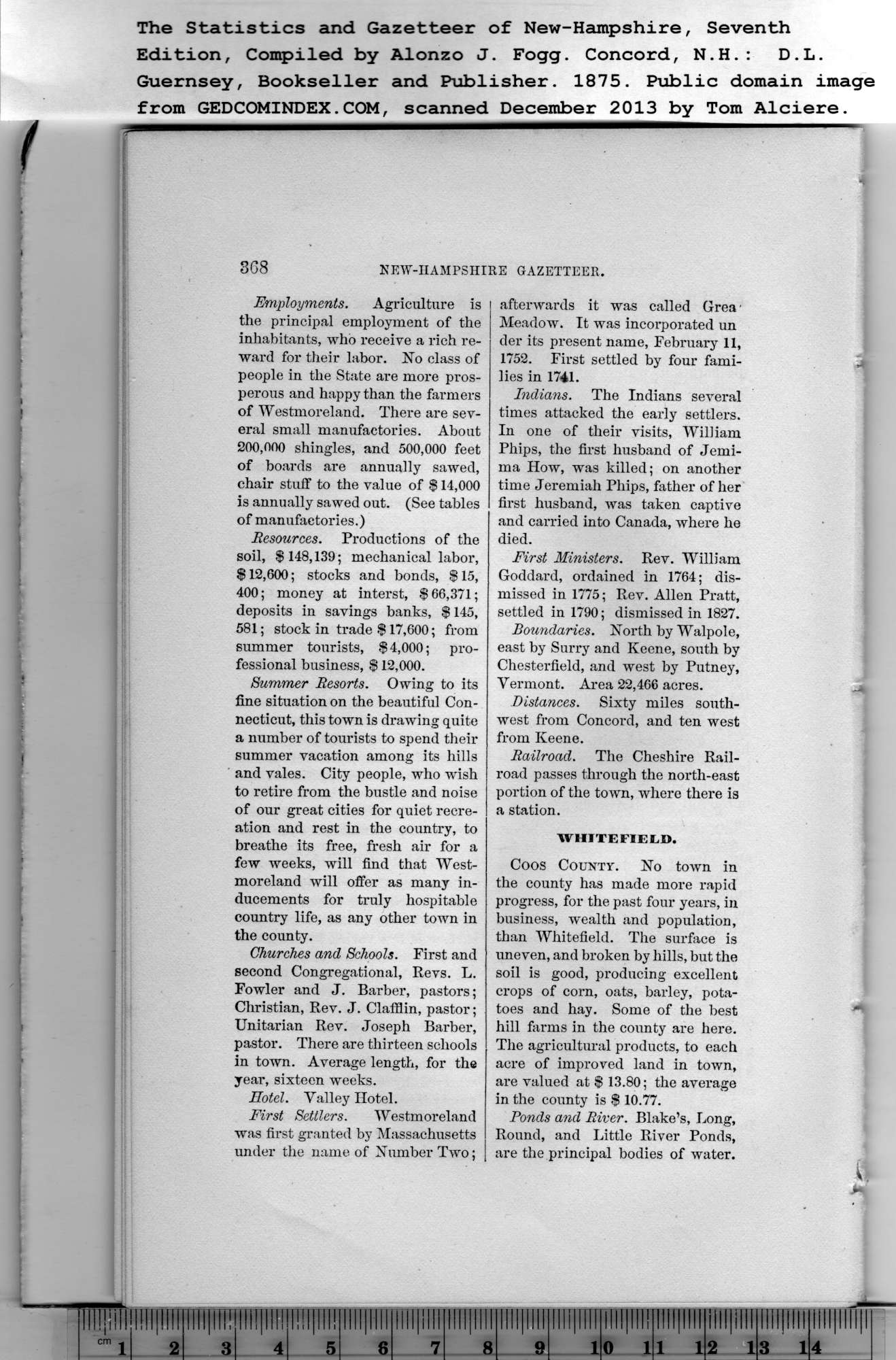|
Employments. Agriculture is
the principal employment of the
inhabitants, who receive a rich re-
ward for their labor. No class of
people in the State are more pros-
perous and happy than the farmers
of Westmoreland. There are sev-
eral small manufactories. About
200,000 shingles, and 500,000 feet
of boards are annually sawed,
chair stuff to the value of $ 14,000
is annually sawed out. (See tables
of manufactories.)
Resources. Productions of the
soil, $ 148,139; mechanical labor,
$ 12,600; stocks and bonds, $ 15,
400; money at interst, $66,371;
deposits in savings banks, $145,
581; stock in trade $ 17,600; from
summer tourists, $4,000; pro-
fessional business, $ 12,000.
Summer Resorts. Owing to its
fine situation on the beautiful Con-
necticut, this town is drawing quite
a number of tourists to spend their
summer vacation among its hills
and vales. City people, who wish
to retire from the bustle and noise
of our great cities for quiet recre-
ation and rest in the country, to
breathe its free, fresh air for a
few weeks, will find that West-
moreland will offer as many in-
ducements for truly hospitable
country life, as any other town in
the county.
Churches and Schools. First and
second Congregational, Revs. L.
Fowler and J. Bai'ber, pastors;
Christian, Rev. J. Clafflin, pastor;
Unitarian Rev. Joseph Barber,
pastor. There are thirteen schools
in town. Average length, for the
year, sixteen weeks.
Hotel. Valley Hotel.
First Settlers. Westmoreland
was first granted by Massachusetts
under the name of Number Two; |
afterwards it was called Grea •
Meadow. It was incorporated un
der its present name, February 11,
1752. First settled by four fami-
lies in 1741.
Indians. The Indians several
times attacked the early settlers.
In one of their visits, William
Phips, the first husband of Jemi-
ma How, was killed; on another
time Jeremiah Phips, father of her
first husband, was taken captive
and carried into Canada, where he
died.
First Ministers. Rev. William
Goddard, ordained in 1764; dis-
missed in 1775; Rev. Allen Pratt,
settled in 1790; dismissed in 1827.
Boundaries. North by Walpole,
east by Surry and Keene, south by
Chesterfield, and west by Putney,
Vermont. Area 22,466 acres.
Distances. Sixty miles south-
west from Concord, and ten west
from Keene.
Railroad. The Cheshire Rail-
road passes through the north-east
portion of the town, where there is
a station.
WHITEFIELD.
Coos County. No town in
the county has made more rapid
progress, for the past four years, in
business, wealth and population,
than Whitefield. The surface is
uneven, and broken by hills, but the
soil is good, producing excellent
crops of corn, oats, barley, pota-
toes and hay. Some of the best
hill farms in the county are here.
The agricultural products, to each
acre of improved land in town,
are valued at $ 13.80; the average
in the county is $ 10.77.
Ponds and River. Blake’s, Long,
Round, and Little River Ponds,
are the principal bodies of water. |
